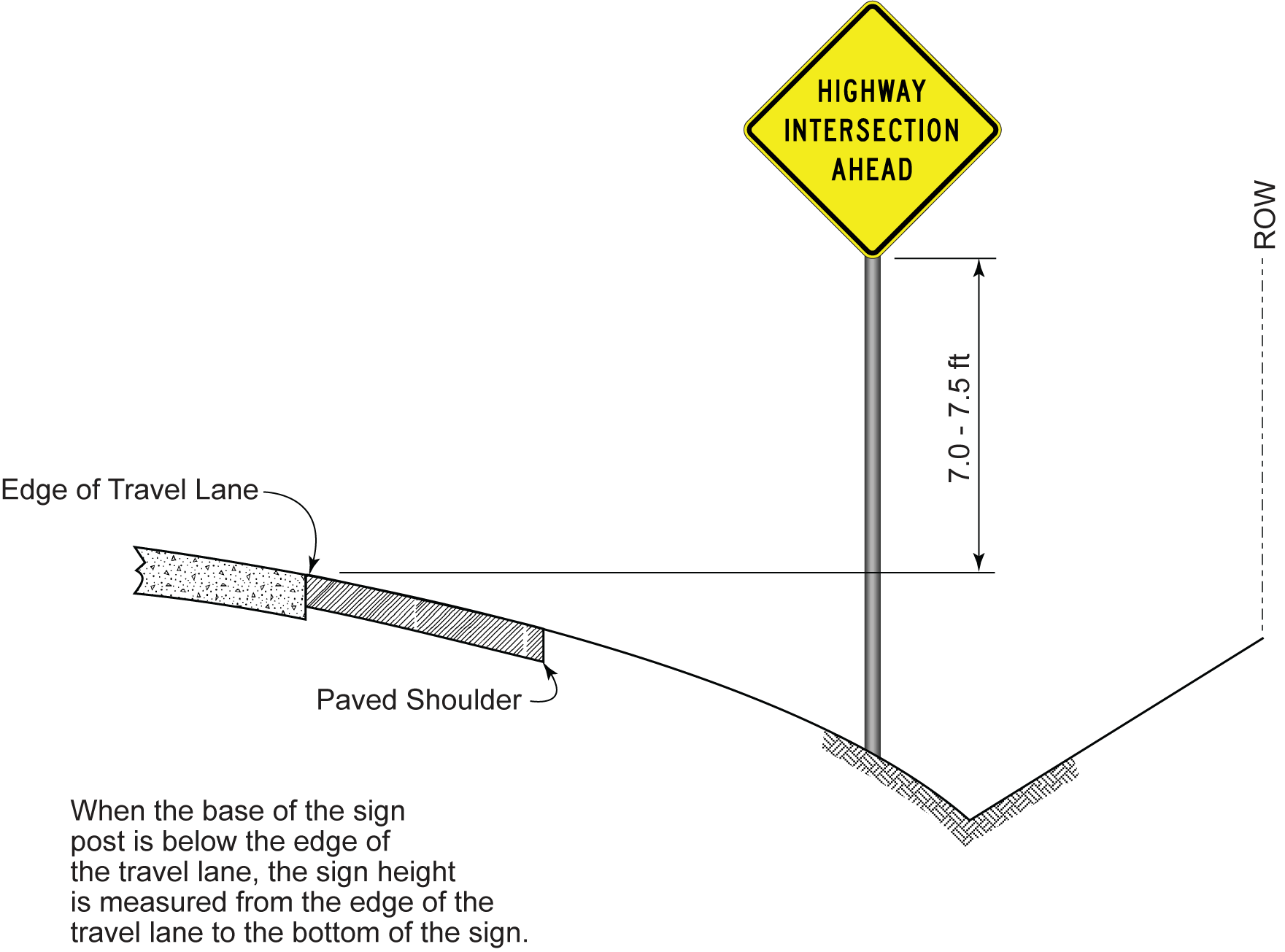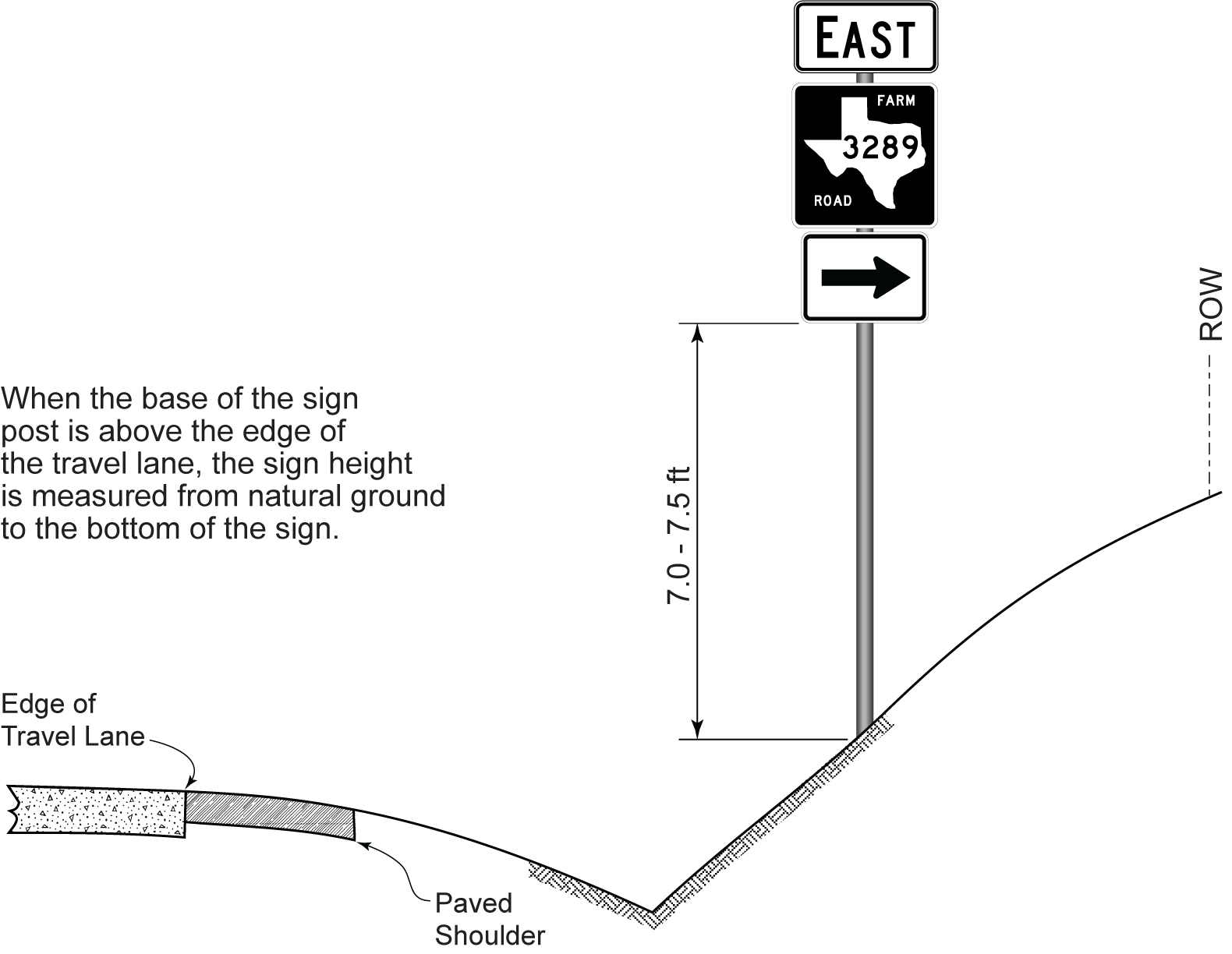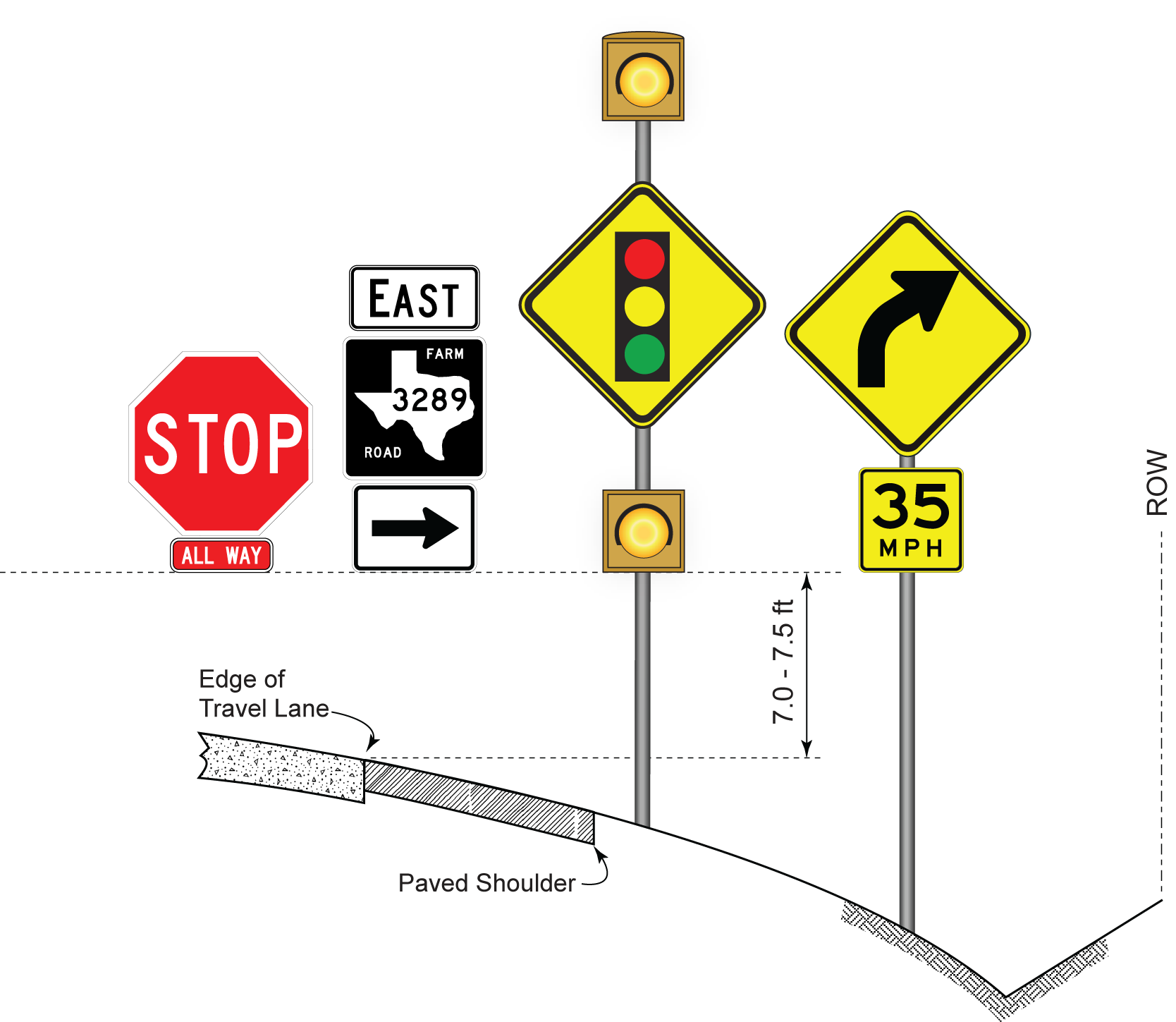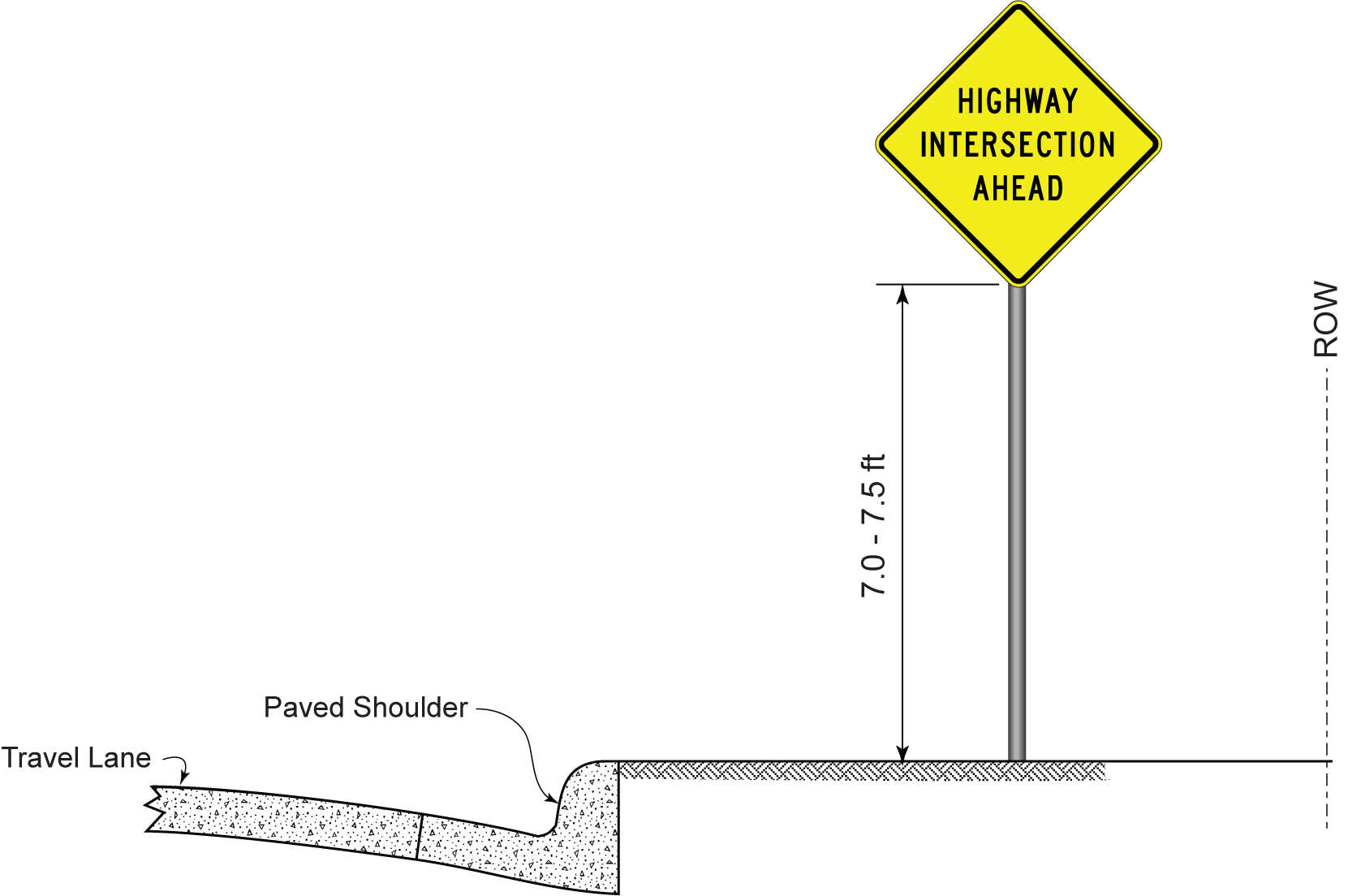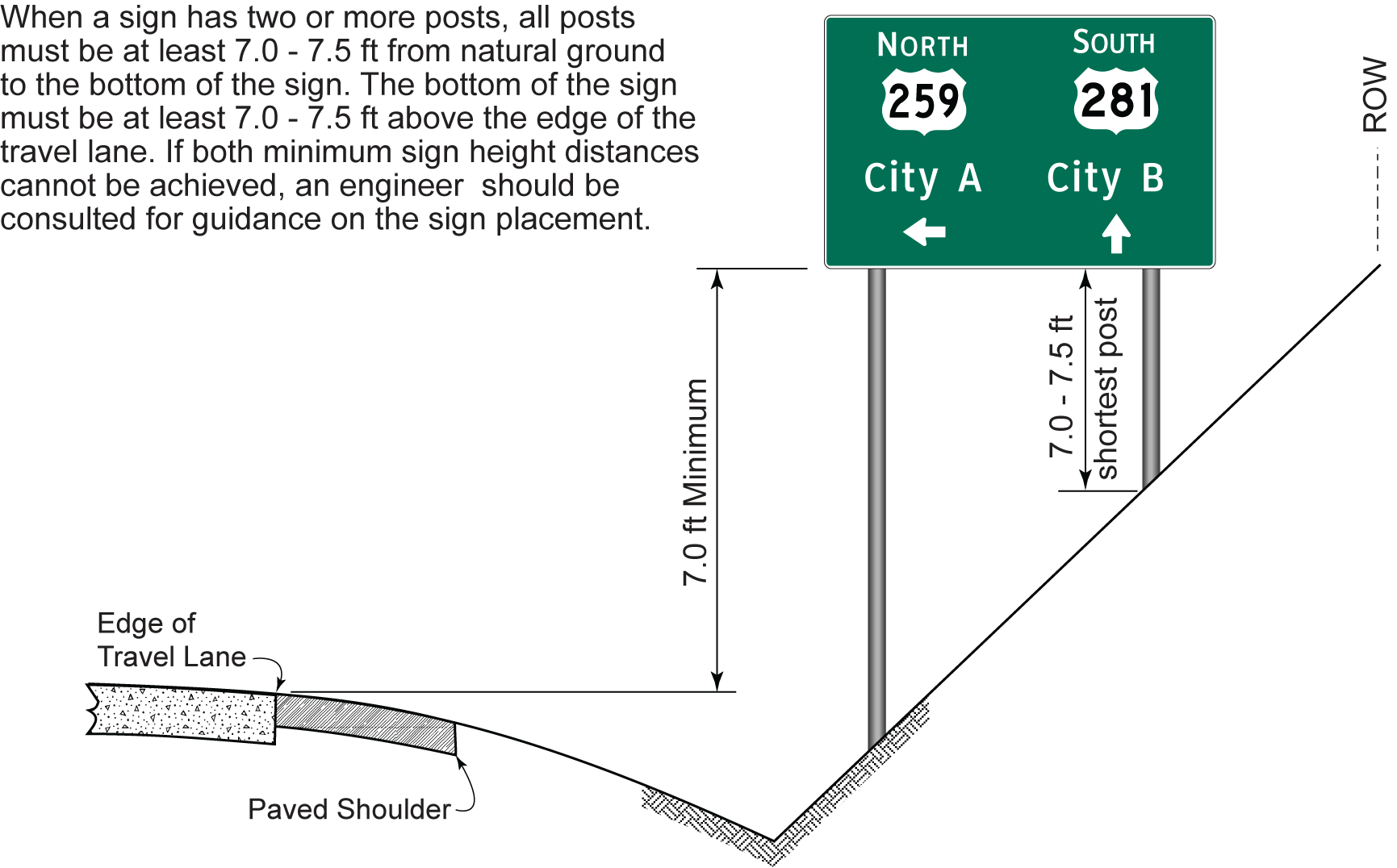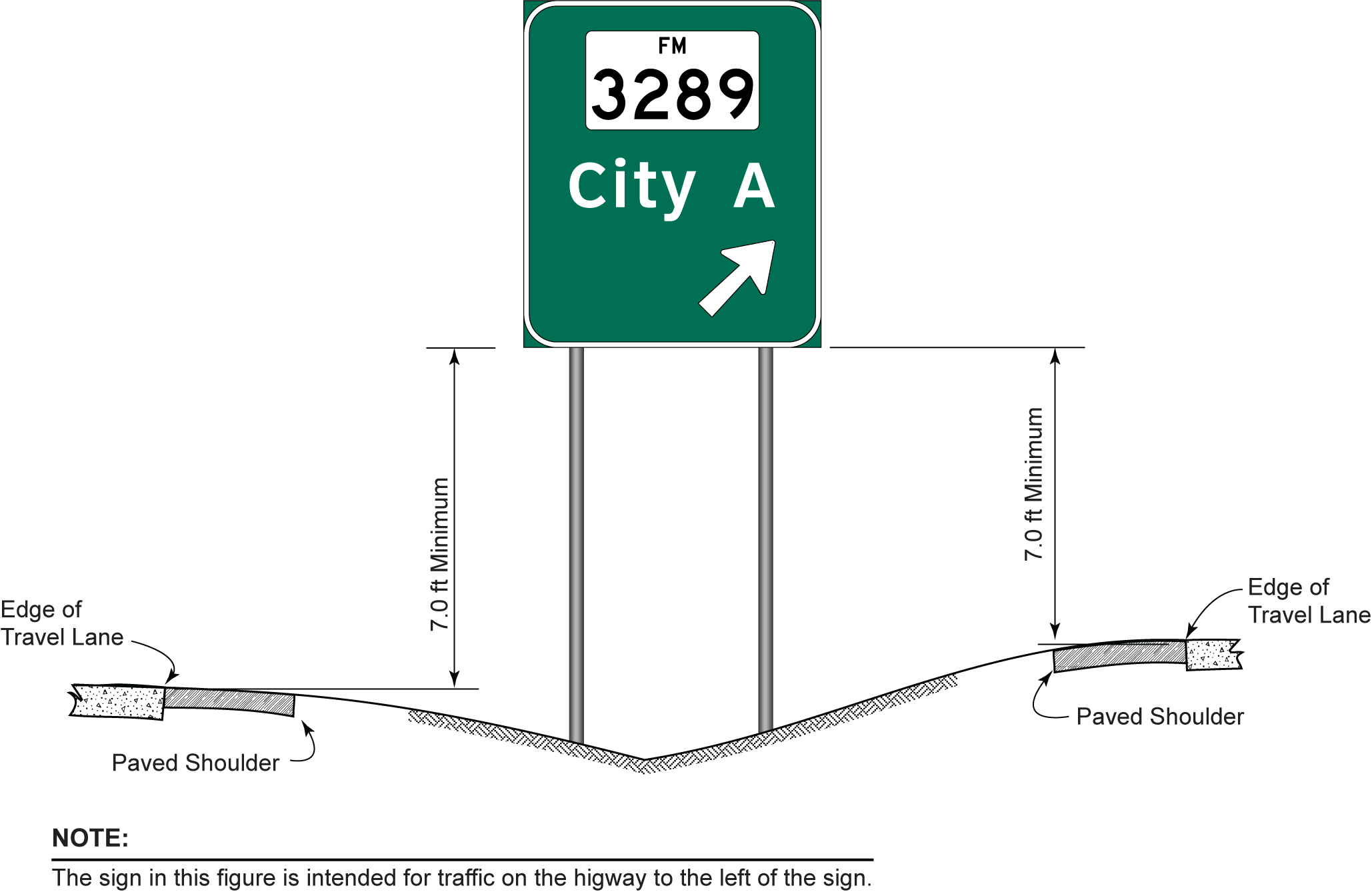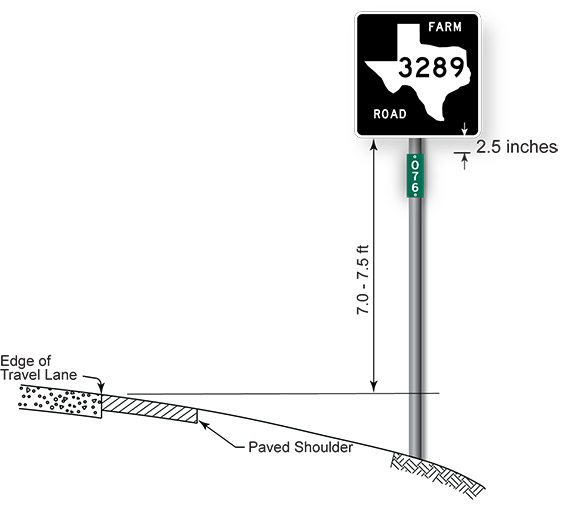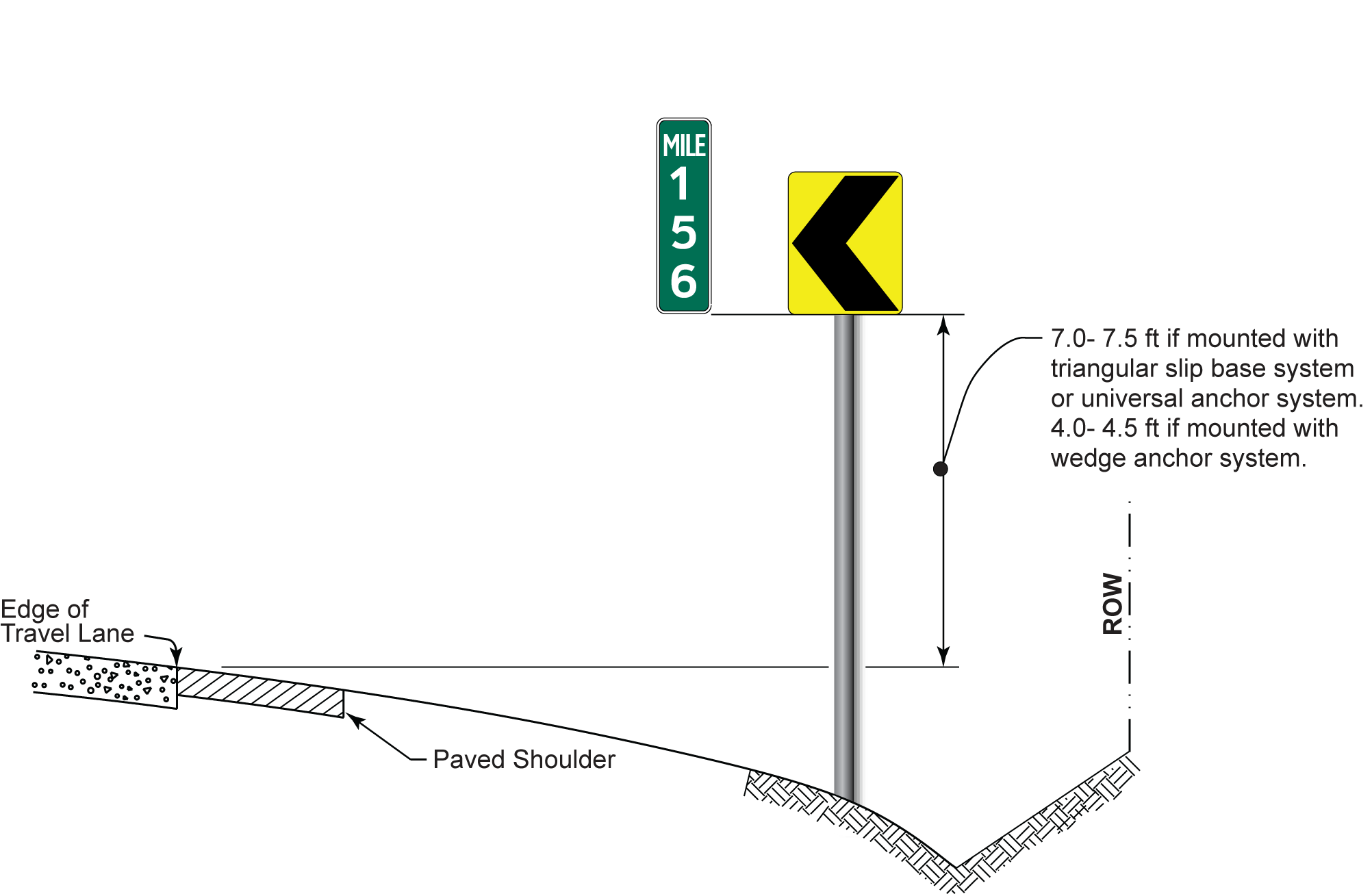Section 4: Sign Height
Anchor: #i1000024Introduction
The proper sign height:
- Anchor: #ARUGWJER
- Improves the visibility of the sign, and Anchor: #EVLQVBFS
- Provides appropriate safety performance.
Signs that are too low may not be visible to road users, particularly in heavy traffic. Likewise, signs that are too low may intrude into the vehicle compartment when struck.
Anchor: #i1000049Height of Signs and Sign Assemblies
Figures 4-15 through 4-22 on the following pages illustrate typical sign height situations. Section 2A.18 and Figure 2A-2 of the 2011 Texas MUTCD describe the height placement requirements for signs.
Figure 4-15. Sign Height on Front Slope
Figure 4-16. Sign Height on Back Slope
Figure 4-17. Sign Height for Installations with a Supplemental Plaque or Flashing Beacon
Figure 4-18. Sign Height on Curb and Gutter or Raised Island
Figure 4-19. Sign Height for Large Sign with Two or More Posts
Figure 4-20. Sign Height between Main Lanes and Frontage Roads
Figure 4-21. Sign Height for Texas Reference Marker Assembly
Figure 4-22. Sign Height for Reference Location Signs and Chevron Signs
